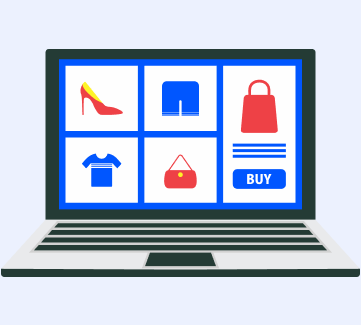Forecasting demand for a new product is both a science and an art, blending data-driven analysis with a deep understanding of market dynamics. Unlike established products, new products lack historical data, making demand forecasting more challenging yet crucial for business success no matter if you want to sell toys online or sell supplements online. Accurate forecasts can help optimize inventory, guide production planning, and inform marketing strategies. Here’s a step-by-step guide to demand forecasting for new products, illustrated with an example of launching a new smartwatch.
Understand the Market and Consumer Behavior
Guide: Start by developing a qualitative understanding of the market and potential customers. Analyze market trends, consumer behavior, and competitors. Key questions to consider include:
- Who is the target audience? Identify the demographics, psychographics, and purchasing behaviors of your potential customers.
- What is the market size? Estimate the overall size of the market and your product’s potential share.
- What are the existing alternatives? Assess competing products and their market performance to gauge potential interest in your new offering.
Example: You’re launching a new smartwatch targeting fitness enthusiasts with advanced health metrics and a sleek design. The primary customers are tech-savvy individuals aged 25-45 who are health-conscious and regularly engage in fitness activities. The global smartwatch market is growing at a CAGR of 10%, with fitness-focused models gaining popularity. Competitors like the Apple Watch and Garmin have strong footholds, but your product differentiates itself with superior health-tracking features and a more competitive price. This suggests a growing market with potential for your product to carve out a niche.
Leverage Analogous Products
Guide: Analyze similar or analogous products that have been introduced in the past. These could be products from your own company or those of competitors.
- Identify analogous products: Choose products with similar target audiences, pricing strategies, and market conditions.
- Analyze their sales data: Look at the sales trajectory of these products during their launch phase.
- Adjust for differences: Consider differences in marketing spend, economic conditions, and consumer trends.
Example: Your company previously launched a fitness tracker with similar health-focused features two years ago. The fitness tracker, targeting a similar audience and price point, reached 50,000 units sold in the first six months. Since the smartwatch market is more competitive, you anticipate a slightly slower adoption rate initially but expect the advanced features to accelerate demand later. You estimate an initial demand of 30,000 units in the first six months, with potential to scale up.
Conduct Market Research
Guide: Use market research to gather data on potential demand.
- Surveys and focus groups: Gather feedback on interest, willingness to pay, and purchasing intent.
- Pre-orders or crowdfunding: Gauge interest through pre-orders or crowdfunding, where customers commit to buying before the product is available.
Example: You conduct surveys and gather data through pre-launch activities. Feedback from 500 potential customers indicates a high level of interest, with 70% expressing willingness to buy within the first year. A pre-order campaign secures 5,000 orders in the first two weeks, indicating strong initial interest. This data supports your earlier estimates, suggesting demand could exceed projections if the product is well-received post-launch.
Use Expert Judgment
Guide: Incorporate insights from experts who have deep knowledge of the industry, market, and consumer behavior.
- Sales and marketing teams: They have a pulse on market conditions and customer needs.
- Industry analysts: Provide an external perspective on market trends and potential demand.
- Product managers: Understand the product’s unique value proposition and can estimate market reception.
Example: You consult with various experts within your company and the industry. Sales and marketing teams believe the smartwatch could reach 60,000 units in the first six months with targeted marketing. Industry analysts suggest that the trend towards health-centric wearables aligns well with your product’s features. Product managers emphasize the importance of educating customers on the unique health features, which could drive higher demand. These insights lead you to adjust your forecast upward to 40,000 units in the first six months, anticipating strong market reception.
Employ Quantitative Forecasting Models
Guide: Use quantitative models to refine your forecast.
- Time series analysis: Adapt this method using analogous product data.
- Regression analysis: Determine the relationship between demand and factors like price, marketing spend, and economic indicators.
- Bass diffusion model: Estimate the adoption rate of new technology or innovation.
Example: You develop a regression model to assess the impact of pricing, marketing spend, and competitor actions on sales, predicting a 10% increase in sales for every $100,000 spent on marketing. Using the Bass diffusion model, you estimate the smartwatch will follow a similar adoption curve to previous wearables. These models suggest potential demand of 45,000 units in the first six months, reinforcing your upward adjustments.
Monitor and Adjust the Forecast
Guide: Once the product is launched, continuously monitor actual sales against your forecast.
- Track key metrics: Sales volume, market share, and customer feedback.
- Adjust forecasts: Use real-time data to refine your demand forecasts.
- Learn and iterate: Use insights to improve the accuracy of future forecasts.
Example: After launch, you track sales data and adjust your forecast. In the first month, 10,000 units are sold, aligning with expectations. Customer feedback highlights strong interest in a feature that wasn’t heavily marketed, leading you to adjust your six-month forecast to 55,000 units. You continue to monitor weekly sales and refine forecasts to ensure inventory levels match demand.
Consider External Factors
Guide: Account for external factors that could impact demand.
- Economic conditions: Recessions, inflation, or economic booms can alter consumer spending behavior.
- Seasonality: Some products may have seasonal demand patterns.
- Regulatory changes: New laws or regulations can boost or dampen demand.
Example: You factor in external elements like a slight economic downturn where most of ecommerce businesses might fall, and which could affect discretionary spending on tech gadgets, adjusting your forecast slightly downward. You also anticipate higher sales during the holiday season, as wearables are popular gifts, and adjust production accordingly. Additionally, new health regulations increase demand for comprehensive health tracking, a key feature of your smartwatch, leading to a final forecast of 50,000 units in the first six months.
Conclusion
Forecasting demand for a new product is a complex but essential task that combines market analysis, data-driven models, and expert judgment. By following these steps—understanding the market, leveraging analogous products, conducting market research, using expert judgment, employing quantitative models, monitoring the forecast, and considering external factors — you can answer a question how to predict demand for new product. This approach not only guides your product launch but also prepares you to meet market demand effectively, increasing your chances of success in a competitive market.



 Community
Community
